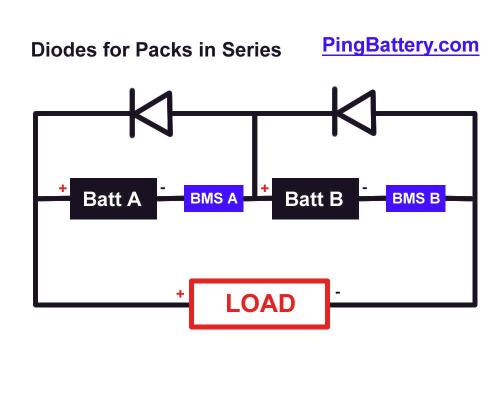Thats where the doides come in as they level the current to 36v on each fuse and batttery.

Unfortunately that's incorrect.
The combined voltage and current of two identical batteries will differ, depending on whether the batteries are connected in series or parallel.
Two 36V batteries, each with a maximum output of 60Amps can be combined in two distinct ways:
- In Parallel, the combined voltage remains exactly the same (36V), but the available maximum current will be doubled to 120Amps.
- In Series, the combined voltage is doubled to 72V, but the maximum current will remain the same (60Amps).
In the above circuit, the diodes are there purely to protect the Battery Management System
(BMS) and they won’t pass any current whatsoever, until one of the
BMS units is activated, disconnecting the battery it is protecting.
When this happens, the diode that is fitted in parallel with the disconnected battery will provide an alternative path so the current can continue to flow from the other battery.
With parallel batteries, the load from the motor is divided equally between the two batteries, so if the motor was drawing 60Amps, each battery would only be supplying 30Amps.
With series batteries, the load from the motor flows directly through each of the batteries, so if the motor was drawing 60Amps, each battery would also be supplying 60Amps.
In a series circuit, the current is always equal throughout the entire circuit, which is why each fuse needs to be large enough to withstand the possible 60A bursts of current without accidentally blowing. A 35Amp fuse fitted in series with a 75Amp fuse and a 60Amp load is a bit like having a weak link in a strong chain, and I think we can all guess which link will be the first to fail when the chain is subjected to an excessive load.
Alan